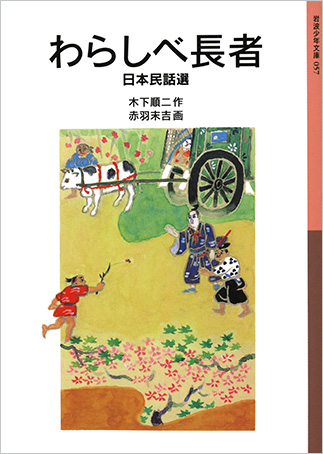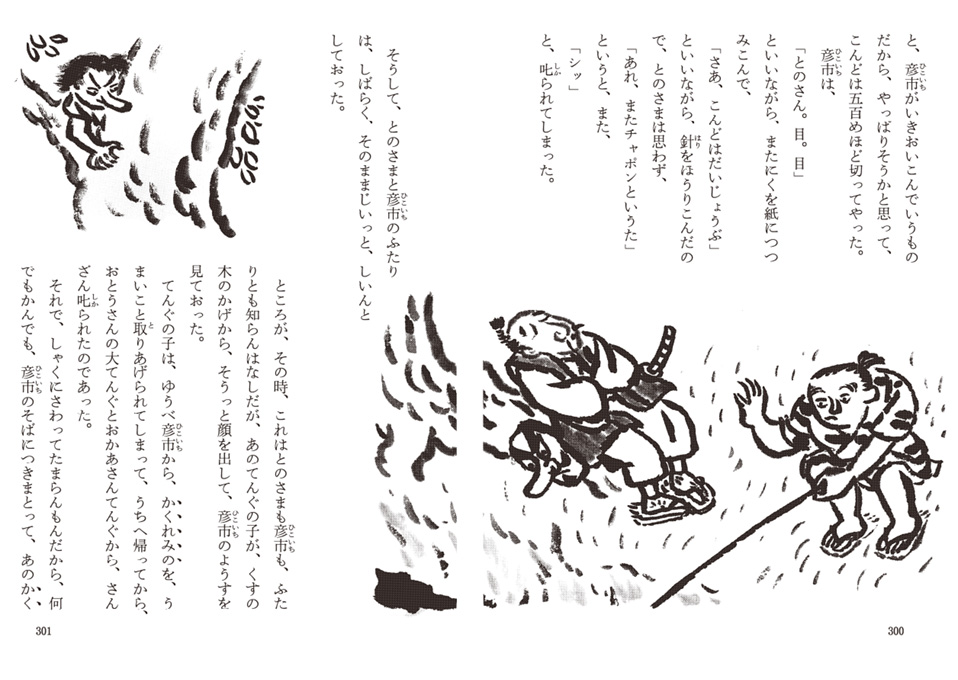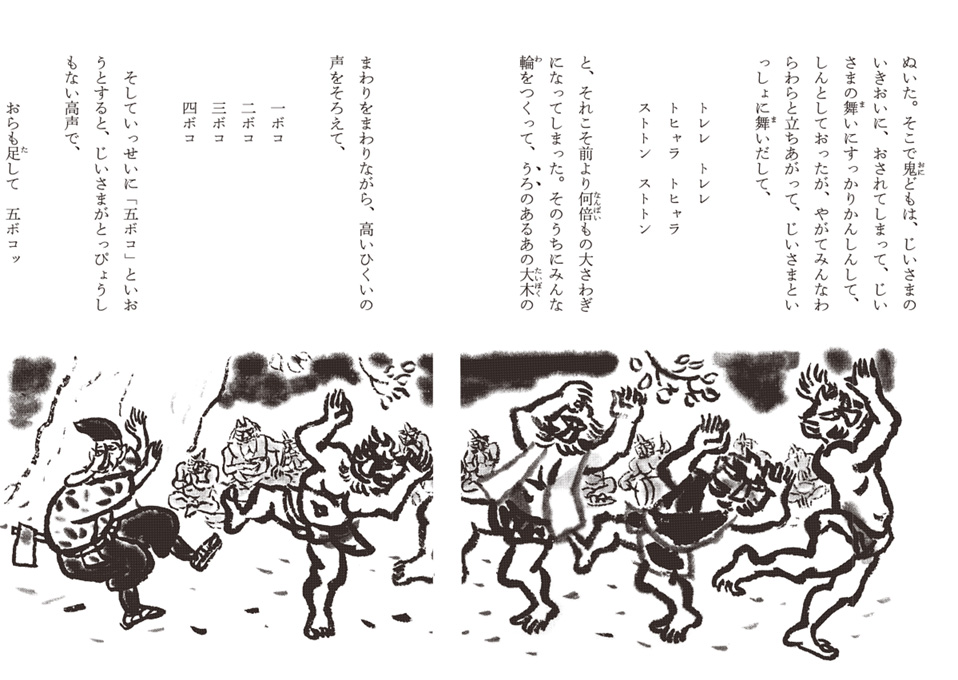This small-format paperback reissue of a 1962 book features 22 folktales from across Japan, retold by playwright Kinoshita Junji in a distinct voice that brings out the fun of their snappy dialogue and hayashikotoba (rhythmic refrains with no particular meaning). Making an appearance in the selection is the timeless favorite “Kani mukashi” [trans. The Monkey and the Crab], which begins with a crab planting a persimmon seed in her garden and diligently watering the soil until the tree finally starts to sprout. The crab is about to taste the fruits of her labor when a monkey from the mountains turns up and throws a persimmon at the crab, mortally wounding her. Before she dies, she hatches a group of baby crabs who crawl out from under her shell to seek revenge. The crabs befriend a chestnut, bee, cow dropping, rack for drying rice sheaves, and stone mortar as allies for the climactic battle with the monkey. This story has been published numerous times as a standalone picture book.
In “Misokai-bashi” [Misokai Bridge], a charcoal maker by the name of Chōkichi has an odd dream in which a figure tells him that something good will happen if he stands on Misokai Bridge. Chōkichi stands on the bridge for a full five days, but nothing happens. An onlooker asks what Chōkichi is doing and bursts out laughing when he hears the story. Mockingly, the man tells Chōkichi that he also heard something in a dream: “Dig under a cedar tree in the garden of a man by the name of Chōkichi, and you will find a vast treasure.” Chōkichi hurries home and starts digging, soon finding an enormous treasure that makes him the richest man in the village. In the collection’s afterword, Kinoshita explains that, intriguingly, “Misokai-bashi” has an almost identical counterpart in English folklore: The Pedlar of Swaffham, about a man instructed to wait on London Bridge. (FY)
In “Misokai-bashi” [Misokai Bridge], a charcoal maker by the name of Chōkichi has an odd dream in which a figure tells him that something good will happen if he stands on Misokai Bridge. Chōkichi stands on the bridge for a full five days, but nothing happens. An onlooker asks what Chōkichi is doing and bursts out laughing when he hears the story. Mockingly, the man tells Chōkichi that he also heard something in a dream: “Dig under a cedar tree in the garden of a man by the name of Chōkichi, and you will find a vast treasure.” Chōkichi hurries home and starts digging, soon finding an enormous treasure that makes him the richest man in the village. In the collection’s afterword, Kinoshita explains that, intriguingly, “Misokai-bashi” has an almost identical counterpart in English folklore: The Pedlar of Swaffham, about a man instructed to wait on London Bridge. (FY)






